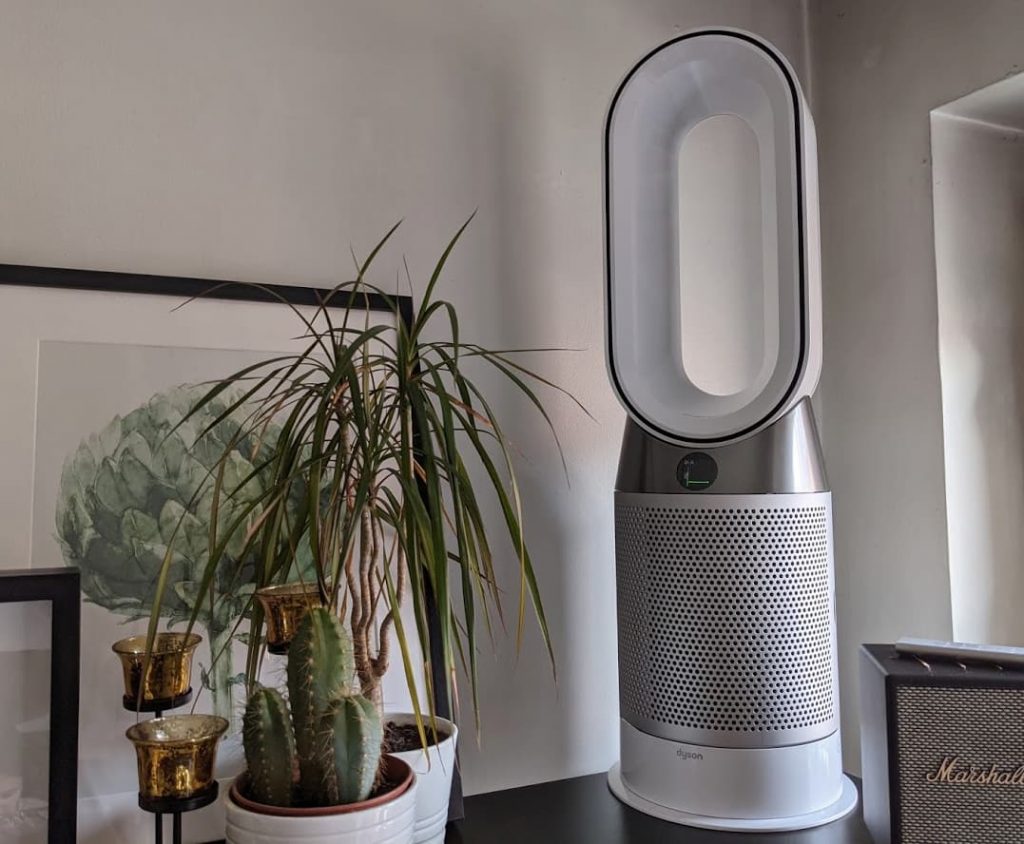A few weeks back I got to test out a Dyson air purifier. I’ve become someone who’s quite conscious about my home environment. The reason I really loved the Dyson air purifier was because it makes the invisible visible. Small particles in the air, invisible to the naked eye but still quite harmful, could be sensed and destroyed by one piece of tech in the corner. Today, Dyson has announced a new air purifier that is capable of both sensing formaldehyde and destroying harmful particles in the air. Last month, I got to sit in on a virtual briefing that introduced the new Dyson Purifier Hot+Cold Formaldehyde.
Obsessed With Airflow
I love Dyson briefings for one reason and one reason only. The Dyson people are proper engineering nerds with an amazing ability to trust the data and not pre-conceptions. For example, they designed a special backpack for children to measure pollution when walking to school versus sitting in a car and found that being out in the open exposed children to cleaner air than sitting in traffic.

We humans get through 10,000 litres of air everyday and nowadays we spend 90% or more of our time at home. Yet, what do we do to actually protect ourselves from harmful particles in the air we breathe? It’s natural human behaviour to be dismissive of what we can’t see. Just look at how the harm we’re doing to our oceans is out of sight and out of mind.
The New Dyson Air Purifier Range
What Dyson machines do incredibly well is make obvious to us what is invisible, informing us and protecting us, focusing on three key areas; sensing, capturing and protecting. The Dyson purifier I’ve tested does these three things and I love it. The great news is that Dyson’s new air purifier range does this too with some added benefits.
Sensing
The technology in Dyson’s gear has always been incredibly advanced. Their products could never be classified as cheap, but they can justify their price tag with the sheer quantity of technology they pack in. Just look at the Dyson Corrale hair straightener. The new air purifiers are no different and in addition to the existing particle, NO2, VOCs, temperature and humidity sensors, a new formaldehyde sensor means the new machines are capable of sensing 0.1 microns, including formaldehyde.
Formaldehyde is a colourless gas often released by furniture and wood products containing formaldehyde-based resins like plywood and fibreboard, insulating materials and even do-it-yourself products such as paint, wallpapers, varnishes and household cleaning products. Given how much we’re spending at home and maybe even taking up new hobbies to pass the time, our air is forever changing. I myself have taken up the odd spot of painting and notice that my own air purifier sometimes kicks off because of the art supplies I’m using, or even some candles I’m burning for some artistic ambience.
With the new Dyson air purifier range, you’ll be capable of being more aware of your surroundings than ever before.
The market does have similar machines out there but as you might expect from a bunch of engineering nerds, Dyson does have an edge. One area they focused on was reducing false positives, which is common in competitor formaldehyde sensors.
Capturing
It’s all well and good knowing about all this bad stuff in the air, but what can you do about it? Well, the new Dyson air purifiers promise more particle capture than before, thanks to reworked airways. The result is a full-stalled HEPA 13 purifier capable of removing 99.95% of harmful particles in the air as small as 0.1 microns. The typical comparison here is a human hair which measures a whopping 70 microns.
Protecting
Beyond all of the insights and peace of mind you’ve got so far, the Dyson air purifiers take one more step to improve the air you breathe.
Dyson’s very fancily named Selective Catalytic Oxidisation (SCO) filter continuously destroys formaldehyde at a molecular level. That means it doesn’t just capture it, it zaps it completely. Its billions of atom-sized tunnels are the optimal size and shape to trap and destroy formaldehyde, breaking it down into tiny amounts of water and CO2. It then regenerates from oxygen in the air to keep destroying it continuously without ever requiring replacement for the life of the machine.
One final point outside of protecting that will be a welcome feature is a 20% reduction in noise made by the machine. I love my air purifier, but in a small room it can be a little loud. While not loud enough to be picked up on conference calls and the likes, a 20% reduction in noise being made by the box in the corner is always welcome.
The new Dyson range launches today and starts at €550 for the Dyson Purifier Cool, going up to €650 for the Dyson Purifier Hot+Cold Formaldehyde.


